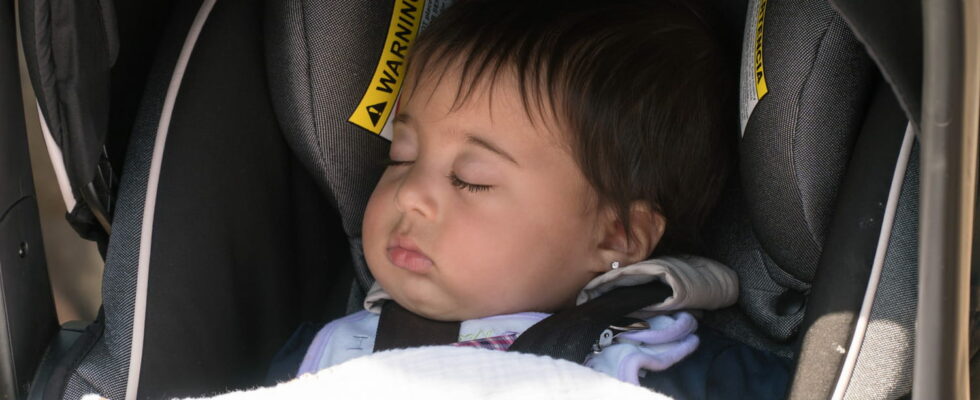From birth, babies must be placed facing the rear in their car seat. But until what age? The new standard to know.
At birth, the baby must be placed in a suitable car seat, facing the rear.. It can be installed at the front of the vehicle, on the passenger side or at the back, but always facing the road. Note that if you choose to install your baby at the front of the car, to keep him next to you, you will then have to deactivate the airbag for greater safety. But How do you know if it’s time to move your baby to forward facing? Here are some tips and guidelines depending on your baby’s size.
The rear-facing shell seat, from birth
At birth, the baby’s muscles are not yet developed and its cervical vertebrae are too fragile to cope with a frontal impact. This is why the car seat must be placed rear-facing until 15 months, ideally in the back of the car. The airbag must nevertheless be deactivated if you decide to place the car seat in the front, facing the rear. Remember that the child must be placed in a semi-reclined position and held in place by the vehicle’s 3-point seat belts.
Please note that a new regulation, the ECE-R129 standard, specifies that it will become mandatory, from September 2024, to carry baby rear-facing up to 15 months, with a minimum height of 76 cm. In fact, the limit was previously set at 9 kg, but some children reached this weight as early as 6 months.
If your child can sit up and feels comfortable in this position, it is then possible to install him/her in a bucket seat with a harness or in a car seat with a protective tray. This seat is suitable up to one metre and can be installed in the rear of the vehicle, facing the road.
Later, your child can move to a booster seat.The child’s size and build require that he or she be placed in a booster seat with a backrest until the age of 10. A seat may be approved for several weight groups (15 to 25 kg and 22 to 36 kg approximately) or sizes.” recalls the Road Safety website.
